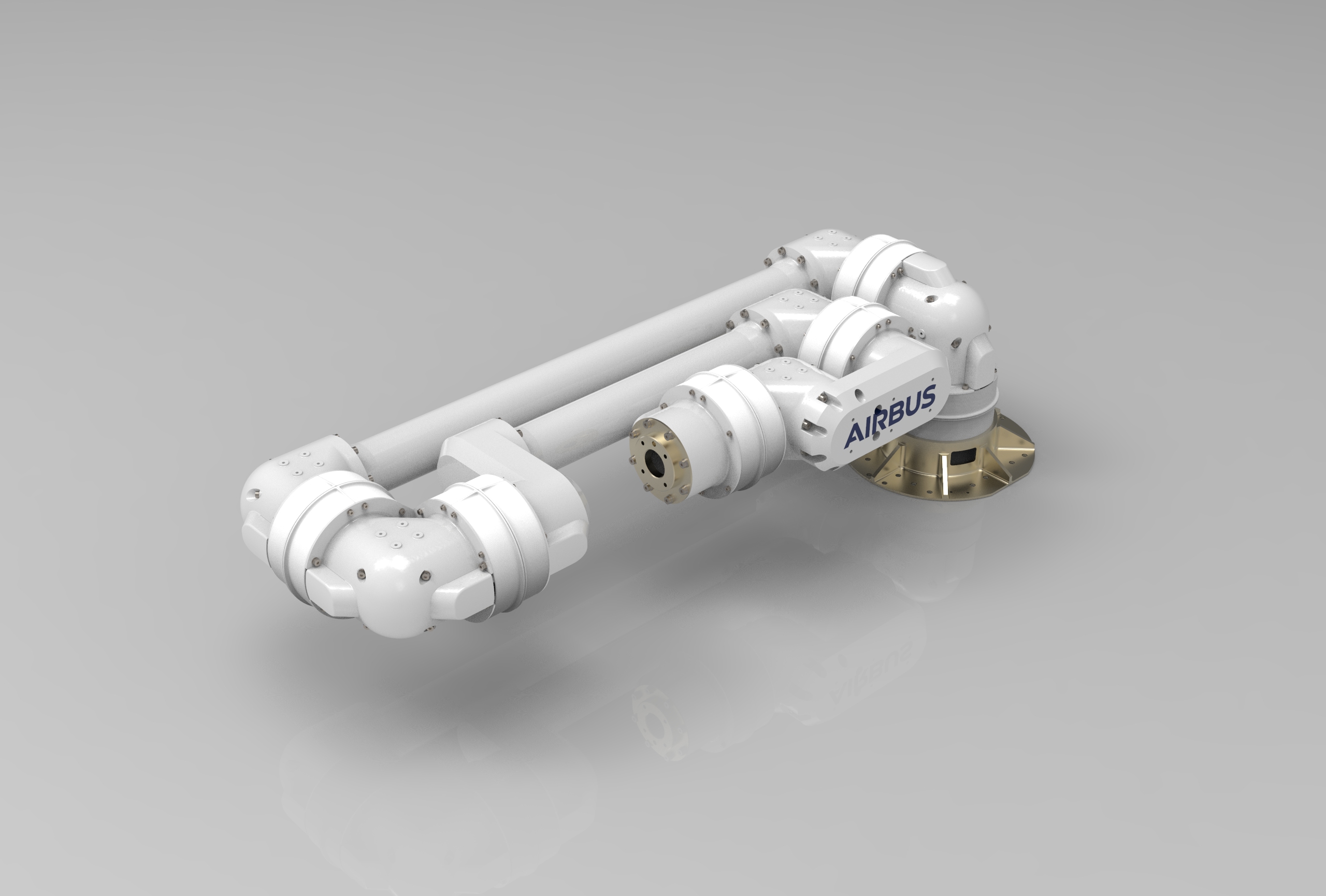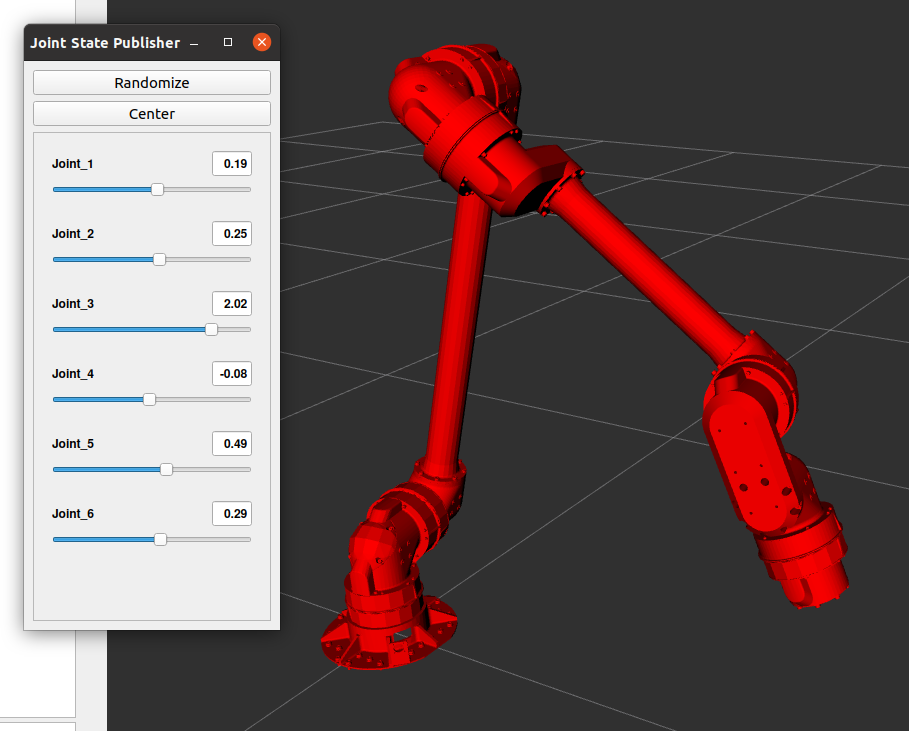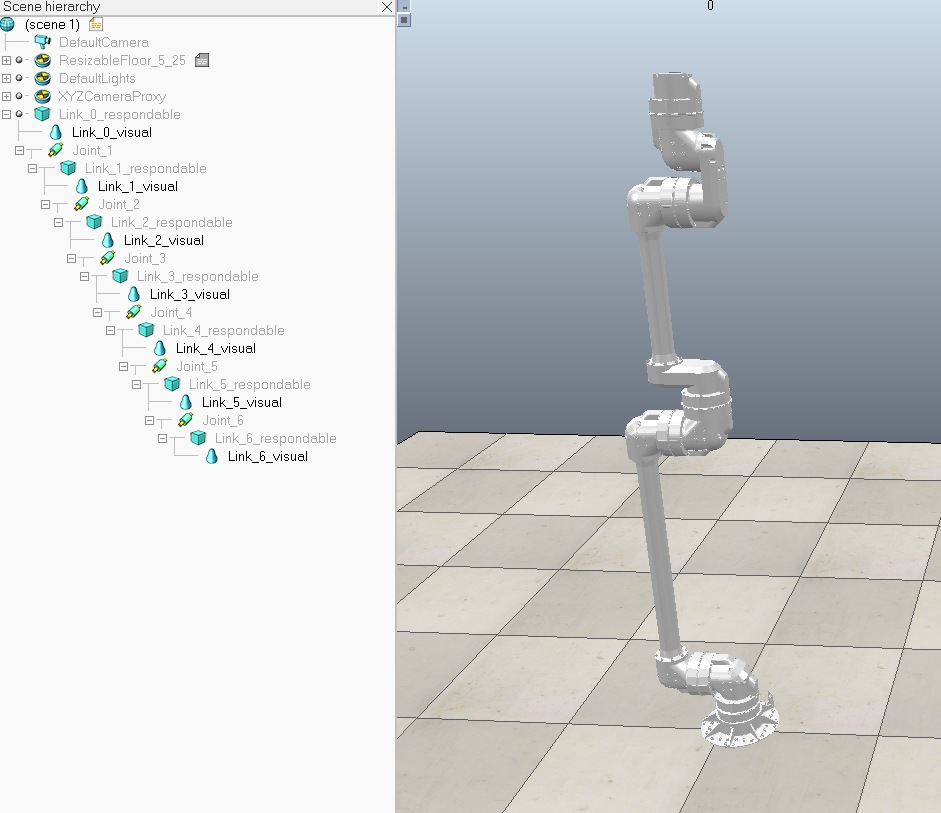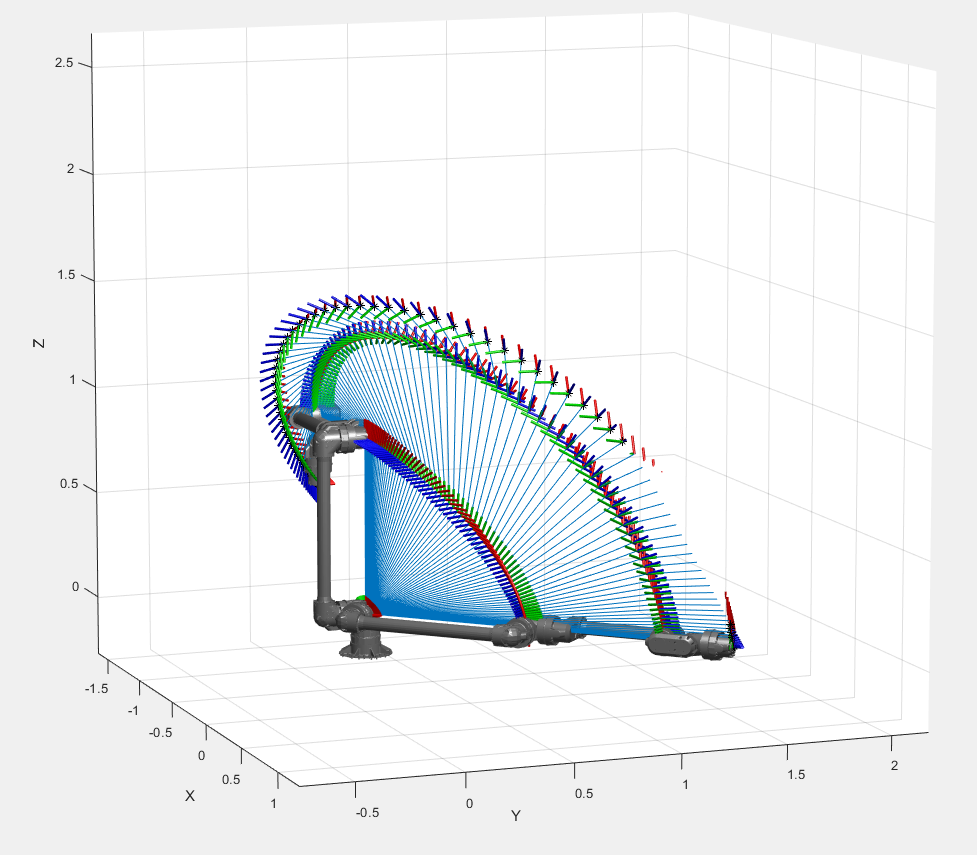(C) 2022 Airbus Defence and Space. Licensed under Apache 2.0
This collection of files and folders containing the necessary information to visualise and simulate the Versatile In-Space and Planetary Arm (VISPA). At the heart of the description package is the Unified Robot Description Format (URDF) that is commonly utalised in robotics to represent a robot model in the XML format.
vispa_description
| README.md
| CMakeLists.txt
| package.xml
|
└─ images
| coppeliasim_vispa.png
| ...
└─ launch
| display.launch
| display.launch.py
└─ meshes
| Link0_DHReference-PublicRelease.stl
| Link0_DHReference-PublicRelease-col.stl
| ...
| Link6_DHReference-PublicRelease.stl
| Link6_DHReference-PublicRelease-col.stl
└─ rviz
| vispa_ros1.rviz
| vispa_ros2.rviz
└─ urdf
VISPA_modifiedDH.urdf
VISPA_modifiedDH_Ros2.urdf
This folder contains the URDF file (VISPA_modifiedDH.urdf) that describes the robotic arm characteristics, and links to CAD data.
Stores the CAD files for sections for the arm in STL format. Each section has two corresponding files; one for visulaisation and one for collision checking algorithms. The colision check STL files are smaller in size to allow quicker processing this is achieved by decimating the mesh.
Setting files to view the model in the Robotic Operation System (ROS) visualisation tool (RViz). ROS has two 'main' versions, ROS1 and ROS2, with subsequent two versions of Rviz.
ROS works by using started scripts or launch files start 'nodes'. The launch folder contains launch files for ROS1 and ROS2. ROS2 uses python instead of the previous custom .launch file type.
This was tested on Ubuntu 18.04LTS with the ROS2 Foxy version. The following assumes Ros2 is already installed, if not then the webpage - https://docs.ros.org/en/dashing/Installation/Ubuntu-Install-Binary.html - is proably a good starting point to understanding how to install it.
Start by cloning the vispa repo to a suitable location.
git clone https://github.com/AirbusDefenceAndSpace/vispa.git
cd vispaThen build the package using the following two commands. The author used the Zsh command shell, if using another one for instance, Bash, then change the suffix on 'setup.' to what is appropriate.
colcon build
. install/setup.zsh Then launch the rviz viewer that hopefully should load the Vispa Urdf and provide a small gui to control joint positions.
ros2 launch vispa display.launch.py This is the basic command to get the model to run with the original rviz, but no gurantees on this...
roslaunch urdf_tutorial display.launch model:=src/vispa_description/vispa.urdf gui:=True CoppeliaSim is a robotic simulator used in industry and academia. This was tested on version 4.2 in Windows 10. I used git bash to perform the clone but other methods in windows are available.
git clone https://github.com/AirbusDefenceAndSpace/vispa.git
cd vispaStart CoppeliaSim and select 'Plugins -> URDF Importer'
Navigate to the VISPA_modifiedDH_CoppeliaSim.urdf file in the vispa/urdf folder and select. It will then take a few moments to import.
An example matlab script is included (matlab_import.m) that loads the URDF, generates a simple trajectory, and generates some simple plots of joint data. Its important to mention that the scipt uses the importrobot function from Matlab's own Robotic Systems Toolbox (https://uk.mathworks.com/products/robotics.html)
Get the vispa repository via the cloning command.
git clone https://github.com/AirbusDefenceAndSpace/vispa.gitOpen Matlab, then change the current working directory to the repo. Open matlab_import.m and click run.
- Important into ROS using ROS2; have in the past used ROS1 but at this stage unable to document the exact proceedure.
- CAD STL models might need to be reduced in size as load times is larger than normal expected.







